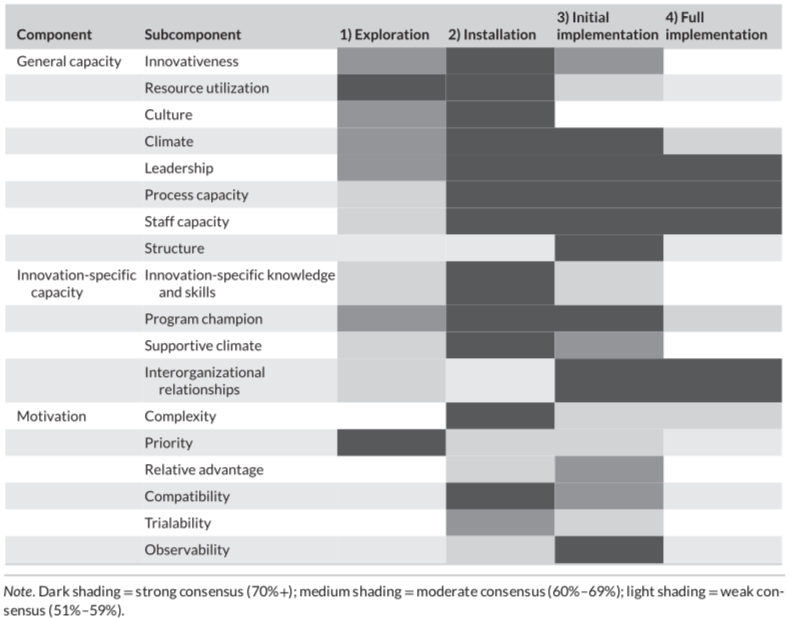|
We know what’s important for implementation success: consistent leaders, a supportive environment, the ability to see early wins, a charismatic champion, and many other elements. But are all these things important ALL the time? No organization has the time, funds, and buy-in to consistently measure and build all these elements. So when should we spend time boosting the champion’s visibility, versus trying to build up relationships between organizations? A recent research effort sought to answer these questions in collaboration with our friends at IHI’s 100 Million Healthier Lives initiative. Experts in community-level innovations participated in a Delphi study to determine when different elements were most important. Since implementation unfolds over time, we broke down implementation into four stages (thanks, NIRN), and asked these experts to categorize when each element is most critical. Using their lived experiences of being community change-makers, these experts identified the differential importance of motivation and capacity over time.
Let’s focus on one stage: Exploration. Sometimes thought of as “pre-implementation,” this stage includes making the critical decision of what kind of innovation to adopt, and starting to make implementation plans. Community change experts agreed that the important factors here include: 1) the perceived priority of the innovation, and 2) how resources are allocated within the organization. This makes sense – the organization has identified now is the time to make a change (priority) and needs to understand the lay of the land for using people and money power to make a change happen (resource utilization). Other factors are certainly still important! Many experts also thought that the culture, climate, leadership, and innovativeness of the organization were also important early on. There is also the need to cultivate a champion to help identify best practices to fill the need and start making plans. The article, published this month in the Journal of Community Psychology, details results across four stages and makes recommendations for future work. We’re currently working to understand how the differential important of implementation factors may vary by setting, but in the meantime check out the article for ideas of when to measure and build these elements for a swift and easy implementation journey!
0 Comments
Leave a Reply. |
Categories
All
Archives
September 2023
|


 RSS Feed
RSS Feed
